Help! my chicks are sick, unwell or dying
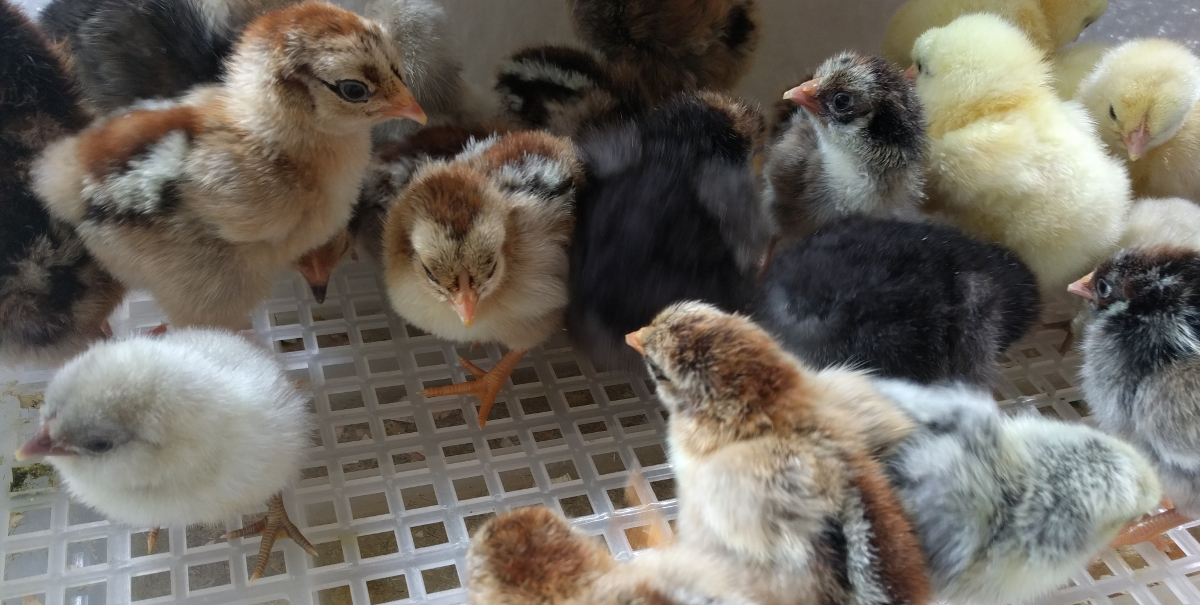
The sick baby chick symptom checker.
So you have bought or hatched a batch of gorgeous fluffy little chicks and now one or two have died and a few others are looking a bit peaky, so what do you do.
Table of Contents
- The sick baby chick symptom checker.
- How many baby chicks die?
- How do you know if your baby chicks are sick or dying?
- Do baby chicks die easily?
- Why do baby chicks and young chickens die?
- My chicks are dying before or during hatching:
- After hatching:
- Chicks dying in the brooder:
- What is pasty butt?
- What causes pasty butt?
- How do you treat pasty butt?
- Baby chick crop problems:
- Impacted crop or crop stasis:
- Is the crop soft or hard?
- Mushy chick disease, Omphalitis or yolk sac infection:
- Paralysis, chicks unable to stand or walk:
- Canker or Avian Trichomonosis:
- Crazy chick disease or Encephalomalacia:
- Aspergillosis:
- Chicks dying overnight:
- What is the best bedding for baby chicks?
- How to treat a sick chick:
- Do chicks die suddenly?
- Why are my baby chicks huddled together?
- Why are my baby chicks chirping so loudly?
- Baby chicks and the ideal brooder temperature ?
- How hot is too hot for baby chicks:
- How cold is too cold for young chicks:
- What does a healthy chick look like?
How many baby chicks die?
Below: This is from a well known commercial breeders website. It gives the mortality (losses) of their rearing stage at 2 to 3%.

If you are losing more than 5% of your chicks before they mature then you have a problem.
Like all conditions and afflictions that affect chicks at the various stages of their lives they are all better prevented than treated.
I have had quite a few sick chicks over the years and I have learned a few things:
- Prevention is always better and cheaper than cure.
- Time is of the essence. If you adopt a watch and wait approach infection will overwhelm chicks in no time.
- Supplements and home treatments are generally of little or no use with sick chicks.
- It is worth trying 24 hours of treatment, even if the prognosis is grim.
- The internet has suggestions, but the vet has solutions.
How do you know if your baby chicks are sick or dying?
Below: A sick chick.
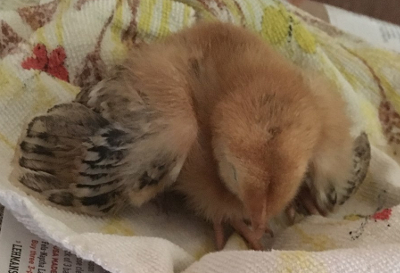
- Affected baby chickens will appear dull, drowsy and lifeless and may sleep more than usual.
- They may be unsteady on their legs and balance themselves with their wings and their heads may flop about.
- Chicks that are sick or unwell will tend to be quiet and not peep to each other like you would find them doing under normal conditions.
- The eyes tend to be half shut as if the light is hurting their eyes. The eyes may also appear to bulge.
- Conditions affecting the lungs will cause sneezing, panting and gasping.
- They may flop down and show weakness on one side or in the legs.
- They will be pale and may have cold extremities.
- They will be thin and feel like skeletons covered in fluff.
Do baby chicks die easily?
Yes. Young chickens can die easily and very quickly. Prevention is the best cure and treatment should be quick.
Below: A chick that has been smothered by its brooder mates.
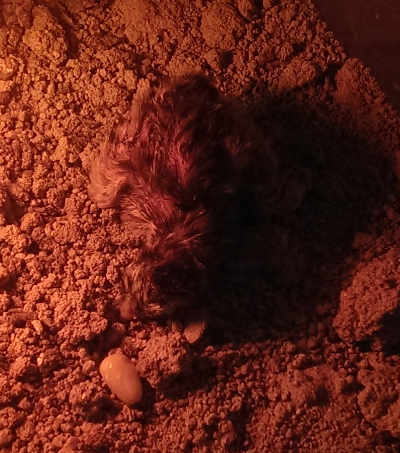
These problems demonstrate why it is so important to get to know your chicks and feel the keel and surrounding muscles regularly.
Starving chicks will be thin and gaunt. Whilst you are watching your day old chicks eat, take the time to check that they are actually eating the feed and not just pecking around.
Why do baby chicks and young chickens die?
The causes of illness or mortality in baby chicks:
1. Cold or low brooder temperatures.
2. Heat , high temps or no cool spaces in the brooder.
3. Draughts, they effect all poultry.
4. Damp brooding areas allow diseases to thrive.
5. Fungus.
6. Pathogens.
7. Eating and feeding problems or eating the pine bedding.
8. Genetic factors.
9. Drowning.
10. Crushing, dropping and/or poor handling techniques.
11. Coccidiosis.
Newly hatched chicks are vulnerable to quite a lot of things that can kill them. Their chances are poor if you're brooder and husbandry technique is not up to scratch.
1. The cold. Chickens are at their most vulnerable in the first few week of life until they grow their feathers and grow up a bit.
The cold will cause chicks to huddle together and they may bleat loudly and continuously. If the temperature is low enough it will kill the chicks either with them smothering each other or they will die in a few hours.
It can also have lingering effects by making them unthrifty and slow growing. Huddling chicks may smother their kin.
2. The heat. This one always seem to surprise people but too much heat is just as bad as cold. Chicks will pant and squish themselves into the corners in an attempt to escape. They will also drink much more water leaching precious minerals and salts from the body.
A brooder pen with a rounded edges like a cardboard ring will help prevent piling in corners and smothering.
The secret is an adjustable heat source and preferably two sources of heat.
3. Draughts are bad for chickens of all ages but before they grow their feathers they are problematic to the extreme. Draughts whisk away body heat and stop them sleeping properly.
Consider your brooder location and position.
4. Damp allows the rapid growth of fungus and pathogens in the bedding, water and feed.
Water evaporating off a wet chick causes cooling. It is vital you provide a dry,clean and safe environment in which to develop.
Moist bedding in the brooder can be caused by spillage, the chicks drinking too much water from salty feed or insufficient surface area in the brooder (too many chicks)
5. Fungal infection like brooder pneumonia or aspergillosis can kill a chick in 24 hours and mortality rates are 100%. You should not subject the respiratory system of a baby chicken to strong perfume or wood oils like cedar wood.
6. Pathogens or bacterial infection. Mushy chick disease or yolk sac infection is caught from poor incubator hygiene or dirty egg shells and is transferred to the chicks during hatching.
This is easily dealt with by good hygiene and practices.
Pasty bottoms may or may not be caused by disease as it has several causes.
The actual bug that causes the disease is relatively unimportant. If you live in a country that requires a vet to prescribe drugs then you will need a quick visit or get hold of antibiotic like TYLAN.
7. Chicks have a greater need for water than they do for food in the early days and it should be warm, not cold. They can be easily knocked into their water by their brood mates so it is important that your water supply does not pose a risk to drowning.
Food and water needs to be clean, in date and of sufficient quality. Dirty water may harbour disease and fungal spores in old or damp feed may produce toxins that will kill quickly. Eating the bedding or shavings can lead to impaction in the digestive system and bung them solid inside.
Cover the shavings for the first few days until they learn to feed on the crumb properly. Chicks eating the bedding is one of the biggest killers of day to week old chicks.
I keep my water at one end of the brooder and the feed at the other. This promotes activity and muscle growth.
Chicks are born with a supply of food inside them. The yolk is adsorbed into the body just before hatching and nourished the chick for around 72 hours after hatching.
Some seem to struggle to learn to feed properly and the odd may may never start. I reckon about 1 in 300 chicks never seems to learn to feed or can't eat.
Baby chickens are naturally curious and will investigate their surroundings .You can imitate the mother hen by picking up a little crumb and sprinkling it on the paper to attract the chicks attention. Or make a pecking motion with you fingers to get the little ones interested.
8. Genetic disorders. Knowing which breeds have known issues, lethal genes and genetic problems. This is an issue inherited from the parents and may not be apparent until hatching. Good breeding practises and parental choice will prevent this.
Splayed legs is an example and is generally a result of baby birds hatching with under developed hip joints.
9. Drowning. Chicks are prone to drowning, especially when newly hatched. It takes them a day or so to find their feet and gain some strength, before that they can drown easily.
Add pea gravel or marbles to the water to keep it shallow or use very shallow water bowls or chick waterers with small holes.
10. Crushing. Tipped over or falling feed troughs or waterers can trap and kill chicks in no time at all. Electric hens that turn over when bigger chicks try to get on top of them and lamps or holders that fall can crush chicks or start fires.
Some chicken keepers, me included , believe that chicks hatched in an incubator are at a disadvantage as they do not benefit from the example set by the mother hen.
I prefer to use a hen but it is not always possible. If they don't teach the chicks then you have too.
I once saw a Facebook post suggesting you should pick your chicks up by the head and let them dangle to see if they are male or female. NO, please don't, this is not a valid method of sexing and may cause injury and death
11. Coccidiosis. I have given this it's own section here as it is responsible for a lot of problems with young birds. Coccidiosis is ameboid parasite that can effect all chickens from mild discomfort to killing them.
Below: Classic hunched posture of coccidiosis.
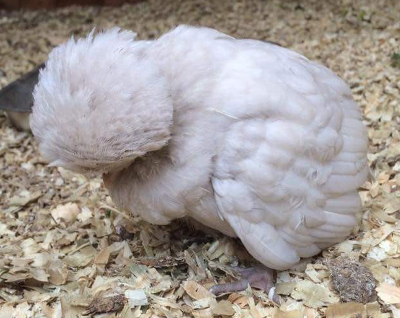
Feeding a medicated crumb will keep it at bay long enough for it to develop resistance. All birds should be treated regularly with corrid or similar.
Chicken keepers should be aware of the importance of the rearing stage in the birds life. After the excitement of the hatch there is a tendency for the keeper to slacken off a little and not be as diligent as they should be.
My chicks are dying before or during hatching:
When your chicks die can be an indicator to the problem.
Chicks die in the shell before they hatch for a great many reasons. Problems with the incubator and the genetics of the parents for example.
Below: Malabsorbtion of the yolk sac can kill directly or allow infection.
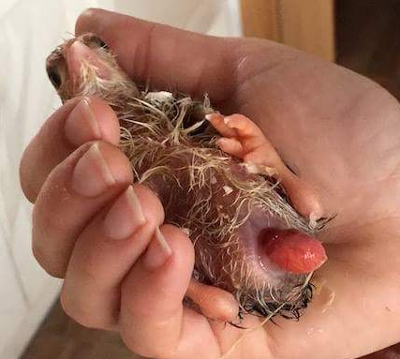
By far the biggest killer of hatching chicks is humidity and ventilation problems in the incubator. Either too low or too high.
I blame this on the term "LOCKDOWN" used so often by chicken keepers. It suggests a closing down of the ventilation to raise humidity. People forget that this is the point that chicks need their most oxygen as hatching is hard work. You should never close the vents, humidity is raised by increasing the surface area of water in the incubator.
Some keepers keep opening the incubator to check on the progress of the hatch and this has the effect of trapping the chicks in their shells.
Below: Keepers trying to help is often the source of dead chicks.

You should leave the hatch to proceed to it's end before opening the incubator and moving the chicks.
After hatching:
If you are losing chicks in the 24 hours after the hatch then it is likely to be either a genetic problem, they often cause quite predictable losses, or the conditions the chicks are in as they dry off.
Below: Genetic malformations often leave chicks unable to eat.
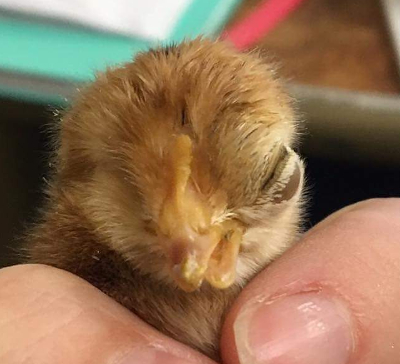
There is a reason chicks should be left undisturbed in the incubator for 12 hours or so to dry properly.
Chicks dying in the brooder:
When chicks die a few days after hatching there is a whole different set of problems to contend with.
What is pasty butt?
Pasty or pasted butt is a condition where soft poop sticks to a chick’s fluff and clogs the vent as it hardens. It is much more common in hatchery and artificially raised chicks than if a mother hen raises them in a natural way.
Below: A chick with a pasty butt.
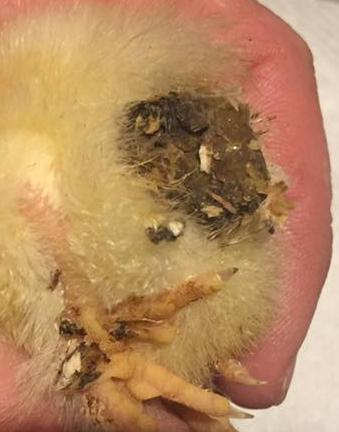
Most chicks are able to poop without any problems and keep themselves clean, but every now and again you will spot a chick that has poop stuck to its vent.
This crusty mess which adheres to the fluff around an in the vent needs to be dealt with quickly as it can clog your poor chick completely and end up killing it.
What causes pasty butt?
Pasty Butt, also known as pasting, paste up, or sticky bottom is an all to common, but mostly avoidable, condition in newly hatched chicks.
The main causes are:
- Shipped hatchery chicks. When they get stressed in transit they may paste up.
- Dehydration. If dehydrated chicks that are given water that is too cold as their first drink it can paste them up. Pasting is less likely to occur when the chicks’ first drink is the same as the brooding temperature (95 to 100 ºF) and the chicks are drinking well for an hour or so before they start eating.
- Disease. This is mostly in older chicks rather than day to week old chicks. In this case the underlying cause needs to be treated as well.
- Improper feeding. Use a quality medicated starter ration.
- Chilling or overheating.
- Too much sugar. The practise of adding sugar to the chicks’ first water as an energy booster can also cause pasting. And sugar just isn't good for them. If you must then a drop of molasses is much better, and only once, not all the time.
How do you treat pasty butt?
Treating Pasty butt requires a few drops of olive oil or some warm water and patience. If you just rip it off you will pull all the fluff out with it and could damage the vent.
Below: Pasty bottoms are not always easy to spot.
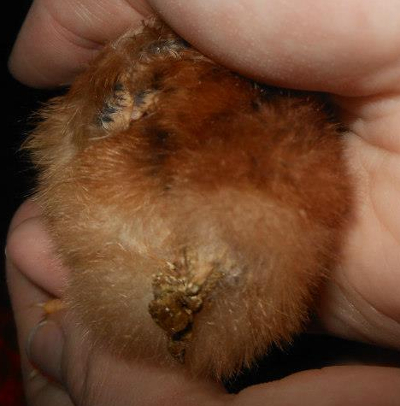
I first add a few drops of warm (never cold) oil or water to the vent and the surrounding fluff and leave it soak in for a few minutes and leave for 5 minutes.
Hold the chick and give the lump a gentle wiggle to see if it moves easily. If not repeat with another drop or two of oil or water and give it a few more minutes.
Depending on how thick and hardened the poop is, you may have to pick off a little at a time, all the time being extra careful not to damage the baby chicks tender skin or pull too much fluff out.
If it is really bad you may need 4 or 5 goes at it before it comes away properly.
Baby chick crop problems:
Chicks crops always look bulbous and gigantic and stick out a lot. They tend to gorge on the food and then sleep.
Below: The crop on a baby chick:
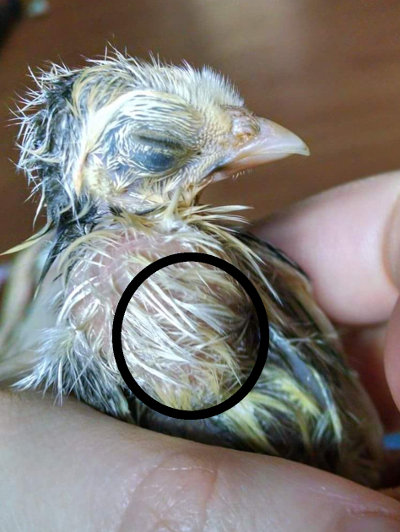
It may not be an impacted crop. My vet has explained to me in the past that in fowl with peritonitis the gut stops moving and the crop gets hard. In this case you could treat the crop and it would still be futile.
Impacted crop or crop stasis:
These are fatal conditions if untreated and the sooner they are picked up, the better the outcome is likely to be. Crop stasis is also called ‘sour crop’ because of the smell that goes with it – if you smell an affected chicken’s breath, it will smell something like sour milk or yogurt.
Often owners don’t realise that their chicken isn’t eating because the crop always seems to be full. Indeed, the crop continues to grow if the chicken is still trying to eat but nothing is getting through.
If your chicken is suffering from crop stasis, it is also very likely to be suffering from something else: crop stasis is rarely a primary problem but is a result of other disease processes.
Is the crop soft or hard?
If your chicken has a crop impaction, the crop will continue to grow as your pet eats, becoming very hot, red and heavy, so much so that it can be difficult for your chicken to stand.
If a chick is eating and drinking normally then the crop will be softer and a little squishy and will be empty when the chicks have been sleeping.
If it is a hard solid lump then it may be impacted.
You must take great care with chicks, damaging one is almost certain to kill it.
The only effective treatment is either to find the cause of the problem or surgery to empty the crop. Below are two 2 methods of medical management can be attempted if a crop stasis is caught early and before an impaction builds up.
If the crop problem is caused by eating the bedding you should change to sand immediately. Massage with a few drops of olive oil and warm water may help. Take great care not to drown the chick, administer one drop at a time and allow the chick to swallow naturally rather then forcing it.
Making the chick regurgitate the contents of the crop by holding it upside down and gently trying to empty the crop.
Mushy chick disease, Omphalitis or yolk sac infection:
Mushy chick disease, yolk sac infection or Omphalitis is a incubation or hatchery born disease and is a major cause of increased first week chick mortality. It is also sometimes known as navel-yolk sac infection or navel ill. For Omphalitis to occur you need bacterial contamination and a route of entry into the yolk sac must be present.
Mortality is quoted as 5% to 50% but in my experience around one fifth of a brood will die. Symptoms usually begin within 24 hours of the hatch and peaks by 5 - 7 days. The disease progresses quickly often over as little as 24 hours.
Below: Classic mushy swelling characteristic of mushy chick disease.
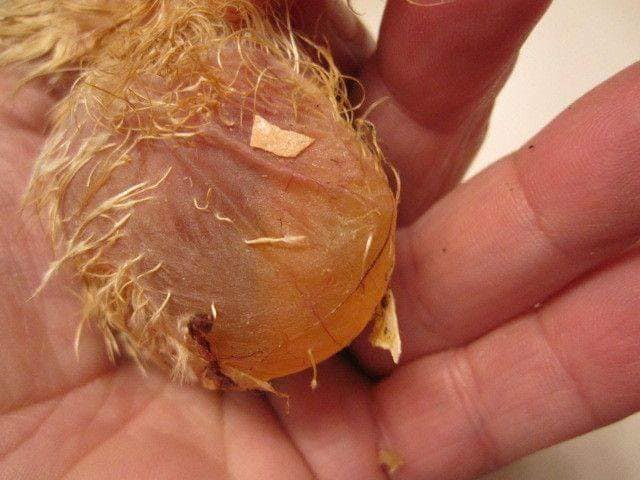
The yolk sac can become infected at different times, from as early as pre-setting, through to incubation and transport to placement. Different bacteria may be involved but the most common is E Coli.
Prevention is the best treatment and starts in the nest, then the hatchery, at transfer and in the brooders.
What are the symptoms of mushy chick disease?
Birds affected with yolk sac infection will appear depressed and dejected with possibly a swollen abdomen. The chicks will be huddled together and may show a loss of appetite and diarrhoea with drooping heads and wings.
Post mortem examination reveals discolouration around the navel and an inflamed yolk sac with distended blood vessels together with an offensive odour.
The chicks feel ‘mushy’, indicating the presence of subcutaneous oedema.
What causes mushy chick disease or yolk sac infections?
Various pathogens are implicated such as coliforms, Staphylococcus, Streptococcus and Proteus. Chicks begin to die within 24 hours of the hatch and peaks within a week. Very high mortality levels are not uncommon, making yolk sac infections or Omphalitis a significant, but largely preventable condition post hatch.
Chicks are not born into a sterile environment and the likelihood of yolk sac infections developing is much higher in a batch of eggs that includes exploded eggs or if the hatcher baskets are not thoroughly cleaned and disinfected prior to transfer. Infection rates can be reduced with good hygiene practices.
Normally after incubation, chicks will hatch with fully healed navels. In some cases though the navel may be slightly open at hatching it should close naturally within a couple of hours while the chicks are drying.
However if the navel shows any deformity, it creates a point of entry for bacteria. Maternally derived immunity will not offer sufficient protection against this invasive challenge while the chick’s own immune system is still immature and the nutrients in the yolk combined with the body temperature of the chick will produce rapid bacterial multiplication.
There can be several reasons for increased incidence of navel deformity. ‘Black button’ navels are caused by incubation temperatures being set too high, especially during the last days of the cycle. Temperatures that are too low during the final days of incubation will produce poorly closed navels.
High humidity during incubation results in insufficient weight loss and as a result, the yolk sac becomes enlarged, which prevents the navel from closing properly.
If humidity is too low, the yolk sac dehydrates and becomes hard, which can damage sensitive tissue around the navel.
Prolonged egg storage periods before incubation result in more chicks with black scab navels, indicating unhealed navels at the moment of hatching.
Is mushy chick contagious?
Mushy chick disease is contagious if you have many chicks with sore unhealed navels after hatching.
- Infection occurs after contamination of the unhealed navel.
- Faecal contamination of egg is the most important source of infection.
- Bacteria may enter into the egg if the hen has oophoritis (inflammation of ovary) or salpingitis (inflammation of oviduct).
- E-coli grow rapidly in the intestine of newly hatched chicks and infection spread quickly from chick to chick in the hatchery and brooders.
What is the treatment for mushy chick disease?
Broad spectrum antibiotics may be helpful however, many E-coli are resistant to the commonly use poultry antibiotics. An antibiotic sensitivity test is essential in identifying the best drug to use in a treatment programme.
Control of mushy chick disease:
Maintain highest standards of management. Avoid overcrowding, dust, build up of ammonia and maintain proper litter condition adequately ventilated chicken houses.
The most important source for transmission of pathogenic E-coli between flock is faecal contamination of hatching eggs.
Transmission can be reduced by collecting egg frequently, keeping nest material clean not using floor eggs, discarding cracked egg or those with faecal contamination and fumigation or disinfecting eggs within 2 hour after they are laid.
Paralysis, chicks unable to stand or walk:
What causes Chick paralysis?
Below: A chick with paralysis is unable to stand.
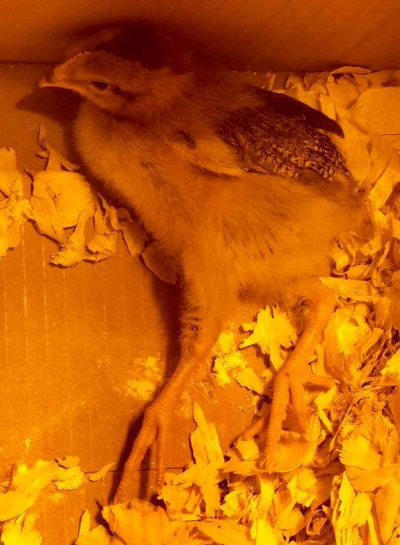
A couple of things can cause chick paralysis:
1. Feeding cat wet cat food. It contains mercury which in a small animal like a chick will overcome them pretty quickly. If you are feeding cat food you could be giving your chickens mercury poisoning.
2. Vitamin deficiencies. Vitamin B or D deficiencies can cause chick paralysis.
3. Disease. Mareks or Newcastle disease. Some strains cause lesions on the nerves.
4. Joint problems. Chick unable to stand or walk may have either a genetic problem with their joints or a calcium deficiency which has led to the problems.
Below: a chick with joint issues.
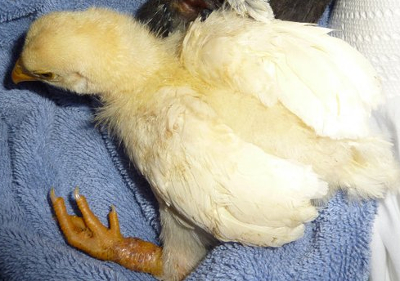
Canker or Avian Trichomonosis:
Canker in chickens, also known as Trichomoniasis, is an infectious disease of birds caused by the flagellate protozoan parasite Trichomonas gallinae. It presents as a growth of yellow lesions in the mouth.
Below: Canker in the mouth. Note the yellow lumps.
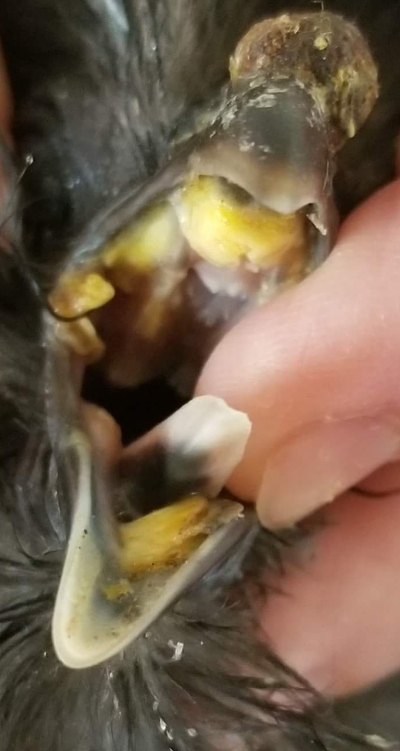
They catch it by drinking from water that wild birds like doves and pigeons have drunk from. This can also happen if you have anything like a container that has collected water from the rain that your chickens have access to..
Canker is very contagious through water and food bowls and has a 20-30% mortality rate because it often makes the chicks stop eating and drinking and attacks the upper respiratory tract and can cause choking.
Below: Chicks can get canker as well.

Bleach and scald with boiling water out all food and water bowls and do a coop clean out on top of quarantine to prevent it from spreading.
The treatment for Canker in chicks is Metronidazole and thyme oil.
Crazy chick disease or Encephalomalacia:
Crazy chick disease or Encephalomalacia is a lack of vitamin E and or selenium in the diet. Crazy chick disease occurs most often in chicks 2 to 3 weeks of age.
Typical signs are muscular weakness, frequent falling, head and neck pulled towards the back, paralysis and eventual death because of starvation. A lack of vitamin B2 (riboflavin) causes curled toe paralysis.
Lack of Vitamin E (Tocopherol) or Encephalomalacia is a nervous disorder in chicks affects the brain, causing degeneration, oedema and haemorrhage. It is seen in birds usually in good condition up to age of 5 weeks (between 2 and 3 week)
Symptoms of crazy chick disease or Encephalomalacia include muscular weakness, progressive muscular in-coordination with frequent falling backward or downward retraction of the head, torticollis (twisting of the neck) and finally paralysis and death.
The treatment is properly fed parents and a quality chick crumb. Vitamin E given through drinking water and selenium is said to be helpful.
Aspergillosis:
Aspergillosis is a non contagious fungal disease caused by spores which are always present in the air. Aspergillosis is a respiratory disease of chicken, turkeys, humans and other mammals and less frequently ducks, pigeon, geese and other wild and domestic birds.
It is caused by exposure to an overwhelming quantity of spores of the fungal species under the genus Aspergillus. In chickens and turkey, the disease may be endemic on some farms. In wild birds, it appears too sporadic, frequently affecting only an individual bird.
Below: Aspergillosis in chickens.
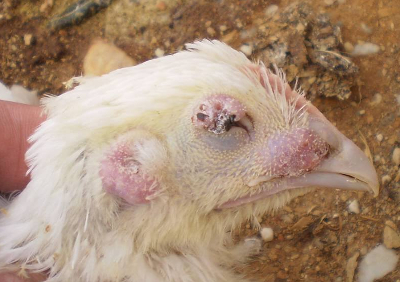
It's most common cause is damp bedding in the brooder which allows the spores to germinate.
It is more complex than a simple infection as fungal growths often produce toxins as well.
Symptoms in chickens:
Gasping with neck outstretched unable to breathe.
Gelatinous, cheesy (proteinous) nodules in lungs, air sacs and liver.
It is difficult to diagnose in poultry and results are really only confirmed by post mortem. Aspergillosis has no effective treatment and prevention by vaccination is not commercially practicable. The only way to control fungal infections is by prevention.
Chicks dying overnight:
These are likely to be getting smothered by the other chicks in the brooder. If you are waking up to dead chicks in the mornings then it is likely there are too many chicks in the brooder or it is too cold and the are suffocating each other.
It could also be that you need a second or larger heat source to spread out the hot spot in the brooder a bit.
I have once encountered a situation in a school where the chicks were dying overnight and this was cause by the electricity being automatically turned off at night time.
What is the best bedding for baby chicks?
I have taken to using sand as the bedding in the brooder. My builders merchant sells it a sharps sand and it costs about £2.20 for 25 kg. It needs to be completely dry which can take some time but it has several real advantages.
It holds heat better than wood shavings or straw (hay) and is no where near as combustible as the traditional bedding for poultry.
You can also see at a glance if it is damp and is does not harbour spores like shavings and bio bedding.
It doesn't matter if the eat a bit of it. Chicks with hen will be taught to eat grit from day 1 and it wont bung them up like indigestible wood shavings. Grit is beneficial.
Sand from the brooder can go in the compost heap the same as any other bedding.
Time spent just watching your chickens is never wasted regardless of their age. Getting in the habit of looking for issues in the early growing stages is key to success. Careful observation allows you to spot the symptoms at the earliest time and nip the problem in the bud before it develops or spreads.
How to treat a sick chick:
1. I personally treat chicks as a whole batch and do the whole brooder and do not separate chicks unless they are being picked on or one is very weak. If it is contagious then you should treat them all anyway.
Below : A sick 3 week old chick.
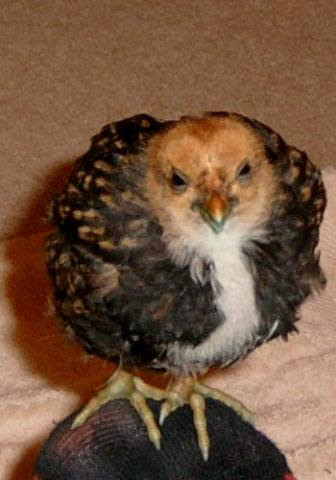
2. Avoid home remedies with chicks and get the correct medication from a vet or licensed practitioner.
3. Follow the instructions on the medication and dose at the correct time without missing doses and don't stop because they look better.
Do chicks die suddenly?
Yes, baby chicks can die suddenly. The big layer breeder Lohman brown quotes their chick mortality at between 2 and 3 % for the first 16 weeks. There are 10 reasons or causes for sudden death in baby chicks and young growing chickens:
1. Heart failure.
2. Stroke.
3. Fright. Frightened or distressed chicks may suffocate by piling into a corner and standing on each other.
4. Genetic problems in the parents. The chicks may have inherited a lethal gene or just had bad breeding.
5. Parental malnutrition. This one is particularly galling if you have bought eggs. Deficiencies of certain nutrients cause death at quite predictable times both before and after hatching.
6. Suffocation from piling or overcrowding. Chicks need space as they grow. Suffocation happens in under 30 seconds.
7. Drowning. A chick can drown in less than a centimetre of water, or just get wet, then cold and die.
8. Manual or accidental death. I have noticed that Guinea fowl keets are quite prone to killing themselves in novel and unpredictable ways. I once dropped an egg on a chick and killed it stone dead.
9. Bullying. This often happens when mixing chicks of different ages in a brooder. The younger ones get picked on.
10. Predators.
Why are my baby chicks huddled together?
They are cold or scared. Frightened chicks can pile into corners and try to hide and cold little nippers will huddle trying to keep warm.
Below. Chicks should sleep in a ring under the heat source, not too far away and not all huddled up in a heap.

It is natural for them to sleep close together.
Why are my baby chicks chirping so loudly?
little baby chicks in the mail is pasty butt. Caused by chilling, overheating, or improper feeding, pasty butt is more common in chicks that come through the mail than chicks that are hatched and cared for by
Baby chicks and the ideal brooder temperature ?
I like a temperature gradient in my brooders. I aim for a hot spot under the lights or heat lamp with cooler areas toward the edges.
This allows the chicks to find their own balance in the brooder. You should not try to keep the whole brooder at the same temperature.
Don't confuse a warm chick that will pant to cool itself and one that is gasping for breath. The former will pant a little like a dog (upright stance) and the second will have laboured breathing (head outstretched in front to open airways).
Some occasional panting is fine and it is normal for chicks to get excited and run around.
How hot is too hot for baby chicks:
It is not unusual for chicks to get excited and run around the brooder and end up panting. If they pant for longer than a few minutes or push against the outer edges of the brooder then it is likely a bit warm for them.
Watch out for sunshine falling on the brooder. With no escape it can overheat them very quickly.
How cold is too cold for young chicks:
When newly hatched chicks are first put in the brooder there should be a spot that is the same temperature as the incubator.
It is too cold for baby chicks if they huddle together under the heat source and/or bleat loudly. Over time they will go quiet and listless and gradually stop moving.
What does a healthy chick look like?
Bright clear eyes, nostrils and vents. Happy upright stance with free and easy motion and mobile. Scratching around, eating, sleeping, investigating and chasing it's brood mates about.
Below: A healthy chick.

